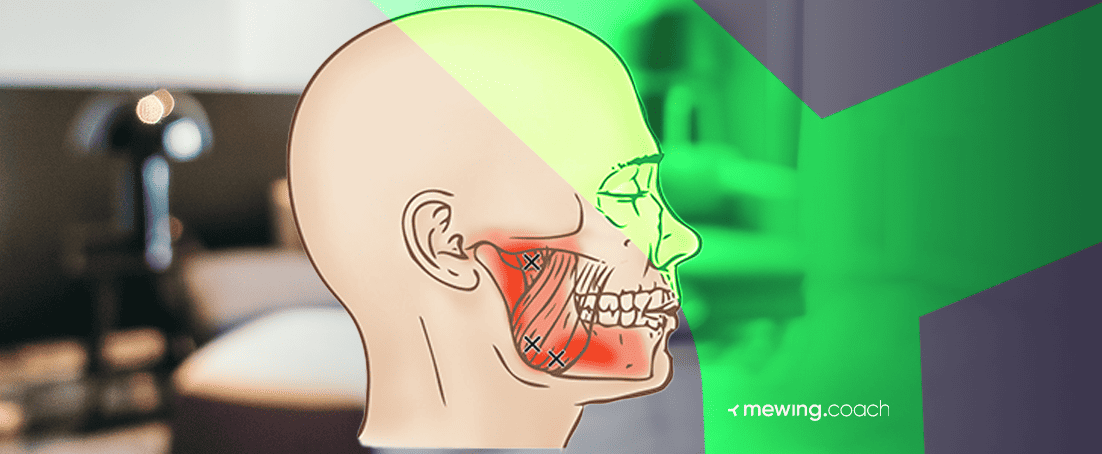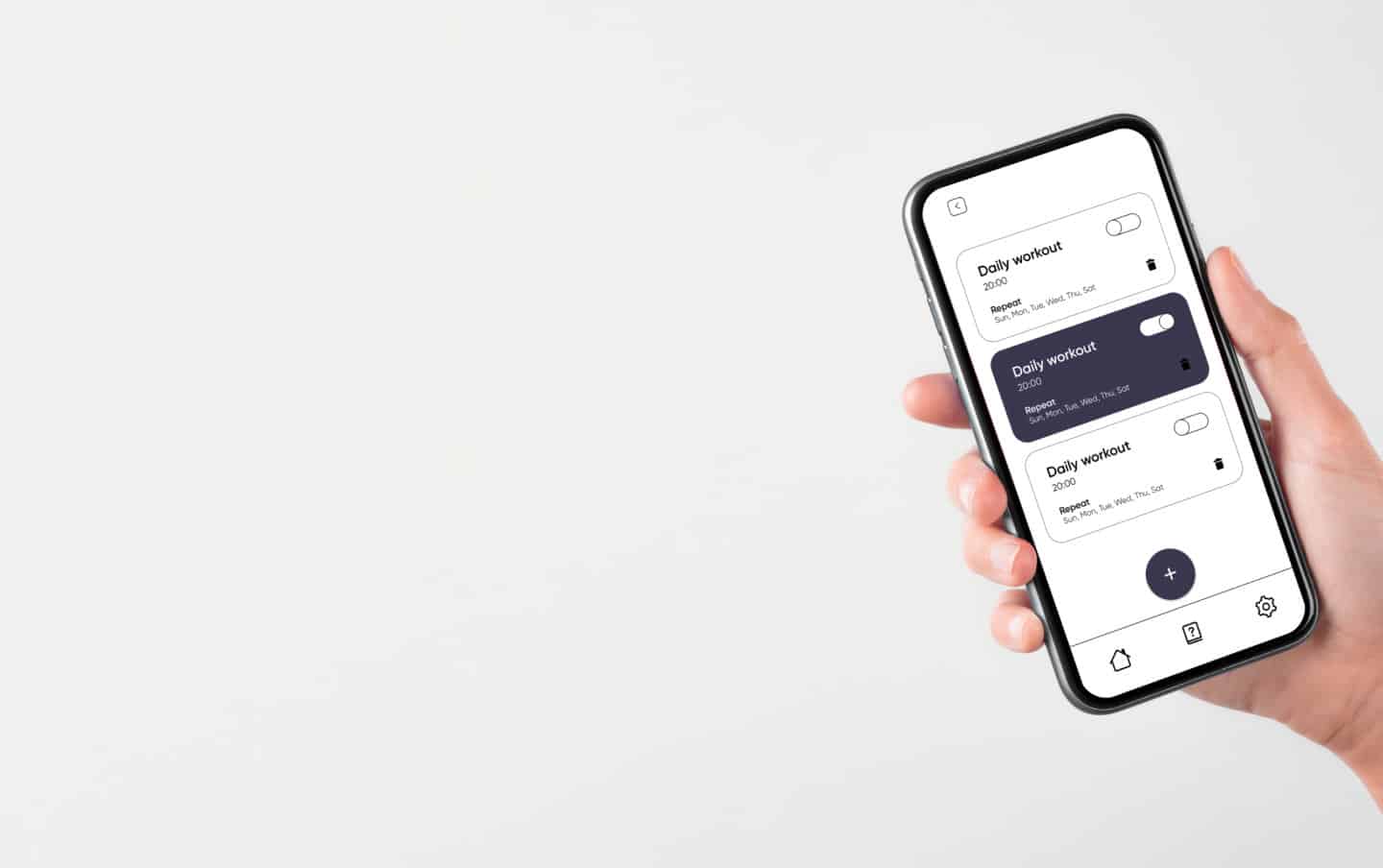It is common for many not to realize just how essential to our well-being the muscles in our face and jaw are specifically. Performing ordinary functions such as talking, eating, and yawning becomes challenging and painful when jaw muscles are tight.
You can take medication to ease the pain in your jaw muscles, but addressing the problem head-on is the best practice.
Below, we will take a look at:
- 📋 The common causes of jaw tension
- ✔️ Relief techniques to release jaw muscle tension
- ✍️ How facial exercises can contribute to your overall health.

Common Causes of Tight Jaw Muscles
A tight or locked jaw can be the byproduct of medical conditions and lifestyle choices alike, including the following:
Stress or Anxiety
When you are anxious, stress levels are at rise, and muscle tension is spread to all areas of the body. Many individuals subconsciously clench their jaw as a result of stress and anxiety, which can also lead to teeth clenching and grinding. This can often result in a headache and jaw stiffness.
You may notice that when a person is feeling anxious or stressed, they also clench their fists, leading to tension in the shoulders and neck.
Teeth Grinding (Bruxism)
Bruxism is the result of uncontrolled teeth clenching or grinding. This happens subconsciously, and for many, it only happens while they sleep.
This significantly contributes to jaw tightness and catalyzes a list of negative results:
- Impaired jaw movement
- Jaw pain
- Jaw dislocation
- Headaches
- Sensitive teeth
- Chipped teeth
- Flattened teeth
- Damage on the inside of the cheeks.
TMD/TMJ Disorder
Temporomandibular Joint Disorder (TMJ) is a condition that affects the temporomandibular joint located between the jaw and temporal bone. Due to tight jaw muscles, TMJ patients experience difficulty opening the jaw, often followed by a popping sound. There is also the opposite condition called “hypermobile jaw” that results in jaw popping and clicking because of jaw looseness.
Excessive Chewing
Foods that require heavy chewing lead to overstimulation and often manifest as tightness and tension in the jaw. This may lead to a feeling of soreness and result in pain.
Rheumatoid Arthritis
Rheumatoid Arthritis (RA) is a chronic autoimmune disorder which results in inflammation in the joints. The immune system mistakes the joints as foreign to your body, causing inflammation and pain throughout all the joints, including the temporomandibular joints. Research shows that almost 90% of individuals with RA also experience TMJ symptoms.
Osteoarthritis
Osteoarthritis (OA) typically develops in individuals over the age of 65, and according to the CDC, it is one of the most widespread chronic conditions that affects the joints in our body, including the jaw joint.
OA happens when the padding between the bones and joints starts to wear off. As this happens gradually and affects unrelated joints in the body, it may occur in one side of the jaw only. Tight jaw muscles are one of the symptoms associated with OA.
Trauma or Injury
Previous injuries to the jaw or face can lead to a locked jaw due to joint damage or misalignment. Trauma to the temporomandibular joint or surrounding structures can interfere with normal jaw movement, often from accidents, sports injuries, or physical trauma to the face or jaw. This damage or misalignment can result in the jaw getting stuck or locked in place.
Structural Issues
Structural abnormalities in the jaw or skull, like a misaligned bite or uneven jaw growth, can cause a locked jaw. Malocclusion, or teeth misalignment, can disrupt the TMJ’s smooth movement, leading to it getting stuck or locked. Congenital conditions or developmental problems affecting the jaw’s structure can also result in abnormalities impacting jaw movement. These structural issues may hinder the joint’s proper function, raising the likelihood of jaw locking.
Jaw Overuse
Excessive chewing gum, nail biting, or habits that strain the jaw joint can lead to a locked jaw. Overusing the jaw muscles can result in muscle fatigue and tension, raising the risk of jaw locking. Repetitive actions like prolonged gum chewing or frequent nail biting can strain the temporomandibular joint, causing inflammation, muscle spasms, and eventually, the jaw getting stuck or locked.
Muscle Imbalance
Muscle imbalance, characterized by unequal muscle strength or tension, can disrupt jaw movement coordination and cause a locked jaw. When muscles on one side of the jaw are overactive or underactive compared to their counterparts, it can lead to jaw deviation and locking. Factors like poor posture, asymmetrical chewing habits, or previous jaw muscle injuries can contribute to muscle imbalance. To correct it, targeted exercises, physical therapy, or other interventions may be necessary to restore proper muscle function and balance.
Tooth Abscess
A tooth abscess, a localized infection within the tooth or gum tissue, can cause swelling, inflammation, and jaw pain. Severe abscesses may form a dental cyst or granuloma, putting pressure on the temporomandibular joint (TMJ). This swelling and inflammation can impede jaw movement, leading to difficulty opening or closing the mouth and potential jaw locking. Treatment includes draining the infection, root canal therapy, tooth extraction, and antibiotics to clear the infection and alleviate symptoms. In severe cases, surgery may be necessary to address complications or structural damage caused by the abscess.
Does Jaw Tension Go Away on Its Own?
How long jaw tightness lasts is determined by its cause. Inflammation and pain, in some cases, can last from a couple of hours up to a few days, while in others may last for weeks, months, or years, depending on severity.
You may experience jaw pain as a result of medical conditions, such as OA and RA, which can progress if appropriate measures are not taken. Overall, hoping and wishing for jaw pain to go away is not recommendable, as taking action and seeking out treatment for TMJ disorders is the best practice for making jaw muscle tightness and discomfort go away.
Natural Techniques to Relieve Jaw Tightness at Home
Simple techniques can be implemented at home to loosen tight jaw muscles, tailored to provide relief and enhance overall jaw mobility, regardless of the cause, such as stress or teeth grinding.
Tongue Exercises
Mewing is one of the most popular tongue exercises that promote the importance of oral posture. It is described as the practice of repositioning the tongue in your mouth to improve your jawline.
You may have noticed that your tongue rests on the bottom of your mouth, which is abnormal. Mewing is all about directing it toward the upper front teeth and roof of your mouth. It is widely popularized as one of the best ways to improve jaw appearance.
Mewing and myofunctional therapy are considered effective alternative orthodontic treatments that can help strengthen your jaw. Let’s see what benefits mewing provides:
- Relieving TMJ pain
- Treating sleep apnea
- Addressing breathing difficulties
- Treating overbite, underbite, and open bite
- Improving speech impediments
- Better facial symmetry
- Increased jaw mobility.
So, can mewing cause jaw pain? The simple answer is that discomfort is inevitable, but pain and soreness are a direct result of incorrect practice.
Note: As we discuss the following exercises, notice how mewing finds itself as an integral part.
Stretching Exercises
Different stretching jaw exercises may relieve pain or discomfort in the upper or lower jaw. Here are some of the most well-known jaw joint stretches used to treat TMJ pain:
- Jaw joint stretch: This exercise addresses pain stored in the neck and jaw muscles. Place your tongue against the roof of your mouth behind the teeth without touching them. Slowly open and shut your mouth, and repeat 10 times.
- Resisted mouth opening: Use your index finger and thumb to hold your chin. The thumb should be placed under your chin, while the forefinger should be wrapped around the front. Gently push against the jaw and open your mouth slowly. Once fully open, hold the position for a few seconds and then close your mouth.
- Goldfish exercise: Start by placing the tongue against your top palate. Place your index finger on the TMJ and use your other finger to lower the chin as far as possible. Once done, carefully close your mouth and repeat.
Massaging the Jaw and Neck Muscles
What better way to treat muscle tension than a massage? This will help increase blood flow while also relaxing your facial muscles. Usually, this type of massage is performed by a healthcare professional; however, you can do a simplified version by yourself.
Simply rub the muscle around your ears in a circular motion. Do so several times throughout the day, especially before going to bed, using:
- Hot and cold compress: As part of your at-home care, you may also use hot and cold packs. Cold reduces inflammation and relieves tightness, while heat increases circulation and aids muscle relaxation.
- Essential oils: Another way to impact your skin’s temperature while achieving a therapeutic effect is to include essential oils in your massage. Research shows that using a blend of essential oils may increase relaxation and produce a synergistic effect.
Deep Breathing Techniques
Breathing exercises are mainly used to treat stress and anxiety but are also the perfect meditation practice. They may help prevent overall muscle tightness and aid conditions such as teeth grinding – the causes behind facial spasms.
Advanced Techniques for Relieving Tight Jaw Muscles
The exercises and methods we described above are basic and simple to administer. Though they might work for most people, they often fail to do the trick for some which is why we decide to include a few more, just in case. For more comprehensive guide, check our TMJ exercises guide.
Acupressure
Acupressure is commonly administered by a professional, yet, individuals who suffer from jaw pain are not always able to receive the treatment when they need it. Learning how to target certain points and alleviate jaw discomfort as a self-soothing method can be very beneficial.
Here are the 4 spots you need to target to eliminate jaw tightness:
- Wind screen: This is considered to be one of the more sensitive points and requires light touch only. It is located just below the earlobe.
- Jaw bone point: The easiest way to locate this jaw muscle is to clench your molars, which will reveal to you a muscle that stretches between the upper and lower jaw.
- Wind pool: These are two points that stand a few inches apart, You can find them at the back of your neck, located on the base of your skull
- Listening palace: It is located at the front of the earlobe. Pressure should be applied on both sides simultaneously.
Using Biofeedback to Soothe Jaw Pain
Biofeedback therapy provides relief in numerous ways. It has a positive effect on one’s mental state, bringing a sense of calmness and proving valuable in stress management and treating fear and anxiety.
It addresses the underlying causes that contribute to jaw tension and can be used as a daily meditation practice. The effects of biofeedback are scientifically backed and proven to improve our overall health and well-being.
When to See a Doctor
Persistent and severe jaw pain are indicators that you should consult with a medical professional immediately. Your pain might vary and range from a dull ache to a sharp stabbing sensation, but pain might worsen with more frequent use of the bottom jaw.
Jaw pain is not always serious; nonetheless, if it is frequent or regular, contacting your physician is highly recommended.
Preventing Tight Jaw in the Future
There are numerous strategies that individuals might implement in their daily life to prevent TMJ disorder symptoms. These may be done by:
- Wearing a mouth guard to prevent teeth clenching and grinding while you sleep
- Excluding sticky foods from your diet to reduce chewing
- Avoid foods that require excessive chewing; replace them with soft foods to relieve pressure from the jaw.
The Bottom Line
Elevated stress levels, anxiety, and conditions like teeth grinding and TMJ disorders are the most common causes of jaw tightness.
There are a variety of approaches that can be used as pain relievers to tackle the underlying causes and symptoms associated with tense jaw muscles. You can use the list included above and find the ones that work for you specifically.
Remember that regularly practicing mewing and other techniques can help prevent tight jaw muscles and improve overall physical and emotional well-being.




